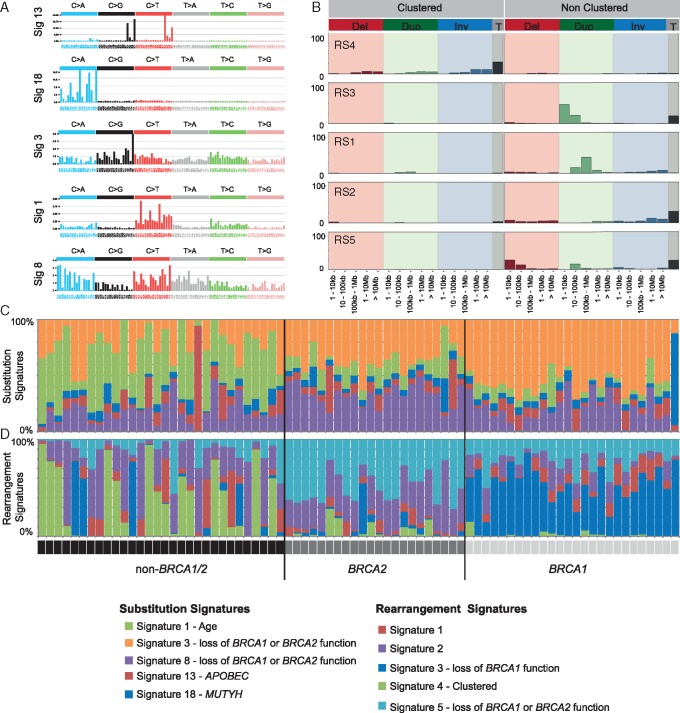Figure 2.
Somatic mutational signatures in familial breast cancer. (A) Five substitution mutational signatures were identified and cosine similarity was used to compare the signatures to known signatures in COSMIC (Mutational Signatures v2 - March 2015; signatures were assigned based on highest similarity). (B) Five somatic rearrangement signatures were identified and cosine similarity was used to compare to rearrangement signatures previously reported in breast cancers [9]. Rearrangements were grouped as clustered in the genome or not, then grouped by type: deletion (Del), duplication (Dup), inversion (Inv), or translocations (T); and then by size (as indicated on the x-axis). (C) The proportion of each substitution signature present per tumour (see colour coding in legend): Tumours from BRCA1 carriers had a higher proportion of substitution signature 3 (orange); tumours from BRCA2 carriers had a higher proportion substitution signature 8 (purple); tumours from non-BRCA1/2 cases had heterogeneous patterns of signatures, but a high proportion of substitution signature 1 (previously associated with age; green). One tumour had a dominant signature 18 (MUTYH, blue) and one tumour had a prominent signature 13 (APOBEC, red). (D) The proportion of each rearrangement signature per tumour (see colour coding in legend): Tumours from BRCA1 carriers had a higher proportion of rearrangement signature 3 (blue), tumours from BRCA2 carriers had higher proportion of rearrangement signature 5 (light blue); tumours from non-BRCA1/2 cases had heterogeneous patterns of rearrangement signatures, but the highest proportion of rearrangement signatures 4 (green) and 2 (purple).

